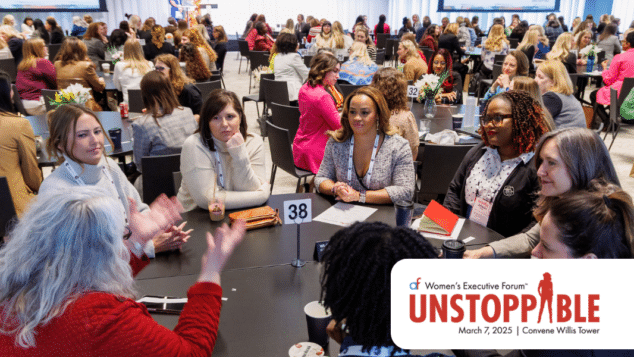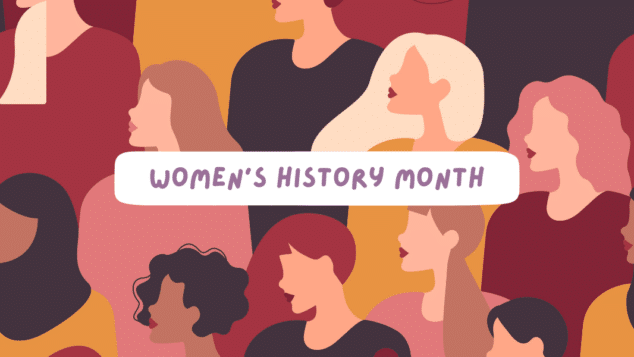The American Chemical Society Makes a Policy Change with an Eye Towards Inclusivity

The American Chemical Society (ACS) was founded in 1876 and is one of the world’s largest scientific organizations. Their mission is to advance the broader chemistry enterprise and its practitioners for the benefit of Earth and its people. ACS Publications is a division of ACS and is home to more than 75 journals. In addition, ACS publications produces eBooks, scientific programs, and a news magazine titled “Chemical & Engineering News.”
With this scale of publishing, ACS Publications works with many scientist authors. When one author and transgender advocate tweeted about the organization’s name change policy, they sprang into action. Following is an interview with Beth Craanen, MS, Director of Global Editorial Operations, and Shaina Lange, MPS, Senior Manager of Publishing Integrity.
Association Forum spoke with ACS Publications in late 2022 to find out more about this policy, as well as other Welcoming Environment efforts.
This interview transcript has been edited for length and clarity.
Association Forum: Tell me a little bit about the DEI initiatives that you’ve implemented at ACS Publications.
Shaina Lange: Sure. DEI has always been a priority for the ACS Publications and our journals program. But I think the world events of 2020 really catalyzed us and forced us to re-examine a lot of the things that we were doing in our journals program. In June 2020 we published a joint editorial with our leadership, Board of Directors, and Editors-in-Chief, where we committed to reexamine our efforts, understand the disparities, and address biases in our publishing program and part of the larger chemistry enterprise. Our approach is to embed DEI into everything we do. These initiatives can come from anywhere – . editors, the community, or dedicated staff who are looking at these things on a day-to-day basis.
AF: Wonderful. Beth, I know we talked a little bit about the name change policy. Can you give me some more information about that?
Beth Craanen: Yeah, and Shaina really spearheaded this, but essentially we’ve implemented an author name change policy to support that aspect if individuals are changing their name within their life. Shaina, do you want to dive into this? Cause I know this is a really great story and one that came from essentially a community member that tweeted and that really had major impact as to why we implemented this.
Lange: Yeah, sure. And I have to give full kudos to folks on the team. This was before I moved into this role, and so there were a lot of people involved in making this happen. As Beth said, we were called to action on Twitter by a transgender chemist and advocate, Irving Rettig, who was already a vocal advocate in this space. They were personally dealing with having to change their name on a prior publication and on their CV, and the ACS did not have a mechanism to do that in an inclusive way. After that tweet was shared with internal stakeholders, we ended up reaching out to Irving. Irving was also part of a group called the Gay and Transgender Chemists and Allies (now called ACS Pride), a subdivision of the ACS Division of Professional Relations
And so, with more understanding of the challenges faced by this community and issues with our name change process, there was unanimous support internally that we needed to question our current process and figure this out.
Our name change policy, as Beth noted, recognizes that people can change their names for a variety of reasons including gender identity, marriage, divorce, religious conversion, or personal preferences. While this affects a lot of researchers, name changes disproportionately affects researchers who are transgender, non-binary, or gender diverse, and women. And these are people who are already facing a lot of other challenges throughout their careers. Historically, when an author wanted to change their name on an article, they were challenged by these restrictive authorship policies where they could change their name but it would involve a formal correction of the record. This entailed notifying or even getting approval from their co-authors, providing legal proof of their name change, and a linked and public notice with an explanation of the update.
There are so many sensitivities surrounding a name change that it just leaves researchers with two poor options. Researchers would either take the formal correction path and risk potentially outing themselves or sharing those sensitivities, or they would just abandon their previous publications. Both can have negative effects on their professional mobility and career advancement, as well as even personal safety risks.
So, in October 2020, we launched a much more inclusive policy that enables authors to update their names on publications that they published with the ACS. It still protects the article and the integrity of that record, but it also allows them to do that in a way that recognizes how sensitive it is. So, we don’t notify anyone else unless they ask us to. We don’t ask for any legal proof or documentation or anything like that. We have safeguarding—steps throughout the process to make sure they are who they say they are, of course. But we’re able to do that in a way that protects the integrity of the record, meets our business requirements, but more importantly, puts that control in the hands of the author.
AF: That’s great. What has been the feedback from members since you’ve done this?
Lange: It’s been incredibly positive. I think [we’re at almost] 400 publications that we’ve been able to update in the last two years. And that dates back to the 1970s. And we’ve been seeing a lot, especially when we first launched our policy, on social media around just hearing the impact of what it means for someone to be able to take ownership and claim the work that they’ve done and in a way that represents their lived identity and the full representation of themselves.
Craanen: Yeah, and one thing I want to highlight is that there were a lot of key stakeholders involved in the process to implement something like this. I think you always have the side of the policy aspect of things and what the policy states, but then also the level of implementation and the change behind the scenes. At ACS, we have nearly 80 journals and over 800 editorial offices. And so, the scope and size of our portfolio is large and the number of authors that we have who have published with us over time is incredible. So, when you think about implementing something like this, it is a very heavy lift and there were a lot of key stakeholders internally that really bought into this project and really supported it, ensuring that this happened. It’s amazing what one tweet can do to create a movement, and create more inclusivity for others. We’ve heard a lot of positive stories about the impact that it’s had so far.
AF: Yeah, that’s great. Kudos to you and your team for taking that feedback and turning it into something real. So, you also have a cover art initiative. Can you tell me a little bit about that?
Lange: I’m happy to. This is a cool series that started at one of our journals, “Analytical Chemistry,” and this was purely the idea of one of the editors there. It’s a great example of how one nugget of an idea can really expand into something. Just for context, every journal issue has at least one front cover art, and that’s typically representative of an article in that issue. And so within “Analytical Chemistry” and our journals at large, we are asking our editors to think how they can creatively help contribute to a more inclusive journals program. Our editors are fantastic partners and they’re the ones who are really in it day-to-day.
One of our editors at “Analytical Chemistry,” recognized that our journal covers are a really great way of bringing visibility to underrepresented groups and the researchers behind the research that we’re publishing. It started out as a really small initiative in that journal. They undertook this initiative to solicit submissions from individuals who were from underrepresented groups. Individuals were able to submit cover artwork as a visual representation of their personal story and experience in chemistry, along with a corresponding editorial describing their story, their experience, and their artwork.They didn’t need to have an article in that issue. That series was amazing. The reception was great, and you can check out all the cover art online on the “Analytical Chemistry” site. It was really successful.
We wanted to give other journals an opportunity to do something similar. So now it’s expanded to the whole portfolio. I think we just closed submissions last month and so we’ll hopefully see a few more published and, if selected, the artists receive compensation for their artwork and their time. We are also putting some of the art in our ACS store so people can purchase a poster or a print. We’ve now had several other covers published in the last year or so from “Analytical Chemistry” and other journals. And they’re really cool. They cover the spectrum of human diversity. And it’s also a really great showcase of the intersection between art and science, which I don’t think we usually see on our cover art.
AF: That’s very neat. So, are these members submitting the art?
Lange: Yeah. Researchers typically in that field. They might be ACS members as well but they don’t have to be. It was kind of a low-level lift. We leveraged a lot of our processes that we already had for cover art and authors can fill out a form to say, “I’d love to have my submission, if accepted, published at this journal,” which maybe, you know, is a journal that is in their field or that they would normally publish at. But if that journal has a ton of artwork submissions, here’s some other preferences I have for other journals. And the idea is to hopefully accept as many submissions as we possibly can.
AF: Very neat. I love that. These seem like great initiatives. They’re really unique things that I haven’t heard much about before. Do you have any tips for other organizations looking for ways to incorporate DEI?
Lange: Yeah, so that’s a great question. I think taking a step back and really looking at (1) what you’re already doing in this space. The name change policy was one where we had a policy in place, but now we were looking at it with this new sense of awareness and so examining things that you already have in place and thinking, “does this really allow people to succeed? Everyone to succeed? And especially people from underrepresented groups.”
I think the other thing that we’re trying to do now that we’ve made progress on a lot of our initial commitments is where do we go next? Really listening to your community and your membership or author and reviewer base, to really get a sense of what are their needs, what are things that they’re feeling, what are the perceptions that they have on their end that maybe we’re not aware of? If you have a mechanism of collecting some of that data about their demographics, but also about their experiences and you might get to things that maybe you weren’t quite aware of.
Craanen: Yeah. I think one of the things that I’ve really loved about ACS is that I feel like a lot of our key stakeholder groups are really committed to moving the needle in this space. We know things like representation matter. So, considering systematic things and making sure how you go about it is not exclusive versus trying to be inclusive of those processes. It’s also taking steps forward and it’s not having to do everything all at once. What are the things that we can do to create better representation? Or things that we can look at that apply? Are we being inclusive on that aspect of things within our systems? And I think there’s a lot of steps that you can take to just think about the system and what you’ve built and how you can break down those barriers to be more inclusive ultimately for your community.
AF: Definitely. Well, thank you so much for joining me today and sharing your stories with us.
Craanen: Yeah, appreciate your time. Thanks for having us.
Feature Image: Artwork featured as part of ACS Publications Diversity & Inclusion Cover Art Series. Top left: Journal of Medicinal Chemistry art by Carolyn J. Straub; Bottom left: The Journal of Physical Chemistry LETTERS cover artwork by Priya Karna and Leah S. Metters. Middle: ACS OMEGA art by Abdullahi Tunde Aborode; Inorganic Chemistry art Abhik Ghosh; Right top: Analytical Chemistry by Xiangkun Elvis Cao; Right bottom: The Journal of Organic Chemistry art by Giovannia Barbosa.
Tags
Related Articles
Tips for Creating a Welcoming Meeting Environment
Creating a truly inclusive annual meeting means going beyond ADA compliance—discover how one association builds...
POV: My First Time at Women’s Executive Forum™ Was Inspiring and Invigorating
A first-time attendee of the Women’s Executive Forum 2025 reflects on the event’s inspiring energy,...
It’s Not Too Late! Celebrate Women’s History Month in March
Celebrate Women's History Month in Chicago with these five impactful ideas to honor, empower, and...






